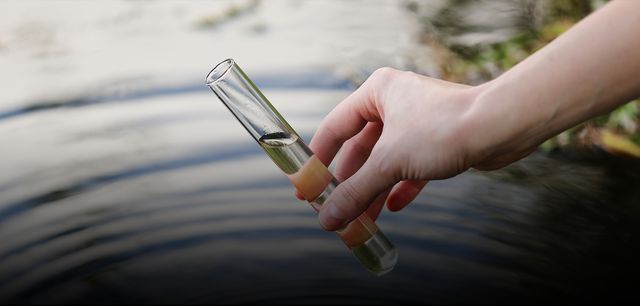14. October 2021
“Citizen scientists” are counting hedgehogs in Berlin, measuring the health of trees in Leipzig, transcribing historical documents or having their computers help in the search for neutron stars. Scientists are increasingly being helped by interested lay people in their efforts to garner well-founded knowledge for the benefit of everyone. Digitalisation has recently given citizen science a fresh boost: it has never been easier to share observations and findings from wherever you happen to be. We present five exciting citizen science projects.
Mosquito Atlas – catching little flying bloodsuckers
Globalisation is transforming our society – and our ecosystem. Exotic mosquitoes are hitching a lift to European countries on imported goods from overseas. And, due to global warming, they may well end up becoming endemic here. But the problem with these exotic bloodsuckers is that they can transmit tropical diseases. It’s for this reason that the Leibniz Centre for Agricultural Landscape Research (ZALF) and the Friedrich Loeffler Institute are catching and researching mosquito species in Germany. In 2012, they sought support for their midge hunt by launching the Mosquito Atlas. A move that really struck a public chord: In 2020 alone, 15,905 mosquitoes were sent to the researchers in 2,464 submissions. In 2015, the project succeeded for the first time in detecting the presence in Germany of a Korean bush mosquito. Also detected with the aid of these submissions was a new occurrence of the Asian tiger mosquito in Baden-Württemberg. The basic idea behind the project is this: By monitoring mosquitoes as comprehensively as possible, the risk of infections and epidemics in certain regions can be assessed more effectively and prevented using precautionary measures. And the advice for anyone who wants to help out by catching a mosquito is not to reach for your fly swatter. Only an intact mosquito will help the scientists!
© Erik-Jan OuwerkerkSeen an exotic mosquito? Catch it, wrap it up and donate it to the "Mosquito Atlas" project.
IGAMon-Dog – canine sleuths for science
In Greek mythology, ambrosia is the food of the gods – but it’s also the name of a plant from the Mediterranean that causes severe allergies in humans. Dog owners and their four-legged friends can now support researchers in the detection of invasive species like these. The sniffer dogs are trained in advance and their finds scientifically evaluated. The researchers are looking to broaden the base of their data to arrive at a better understanding of how and where invasive species are spreading. This will also facilitate the targeted planning of countermeasures. But the resourceful canine detectives will also benefit themselves from their hard work in the name of science: Dog owners are being sought in Berlin, Saxony and Saxony-Anhalt, along with clever and cooperative dogs which can easily be motivated by the promise of toys and food – so says the website of the project, which is backed by the Independent Institute for Environmental Issues (UfU), the Helmholtz Centre for Environmental Research (UFZ) and the Wildlife Detection Dogs association. For anyone who feels that they and their canine companion are a perfect fit for this job description, new human/canine teams will be sought for the second year of training as of the summer of 2022.
© iStockHow and where do invasive plant species spread? Dog owners can help science to answer such questions along with their dogs.
Losing the night – counting stars
Our cities are often beset by pollution of various kinds. But road traffic and industrial plants are not solely to blame. Also on the increase is light pollution, the obscuration of the night sky by artificial lighting. The “Verlust der Nacht“ (“Losing the night”) project aims to measure light pollution and carry out research into its consequences. To get involved, all you have to do is grab your smartphone and step out of your door on clear nights. An app will then point you in the direction of specific stars and ask if you can see them – an indication of the brightness in that particular place. All the measurements are sent anonymously to the database underlying Globe at Night, an international citizen science project which has been recording light pollution worldwide since 2006. The data are used to create maps which show the distribution of the brightness and its trends. Scientists can use these data to make statements about the changes in light pollution. In the medium term, solutions for modern and “night-friendly” lighting concepts are to be developed based on the research results.
© iStockUsing their smartphones and an app, night owls help the researchers of the "Loss of Night" project on their work on light pollution.
Hour of Garden Birds – counting our feathered friends
Counting birds has been a kind of popular sport in the United Kingdom for decades. But in Germany, too, more and more people are discovering their own inner ornithologist: more than 140,000 bird lovers took part in this year's “Hour of Garden Birds”. Over 3.1 million sightings of birds in over 95,000 gardens and parks were reported to NABU, a nature conservation association in Germany, and the Landesbund für Vogelschutz (LBV), a national bird protection association. The result of the count was this: House sparrows, blackbirds and great tits are the undisputed leaders of the pack. Swifts, house martins and blackcaps remain a cause for concern. Blue tits have been given the all-clear: whereas a bacterial pathogen had led to the mass extinction of this species in many parts of Germany in 2020, since then, however, it seems that these blue-capped birds have recovered from the epidemic. So, what is the point of the bird count? Only if we know which species are flitting about where and in what number will we be able to protect them effectively. And, for those who would like to take part in the count, a count takes place every January to establish which birds are overwintering in Germany. In the second week of May, it’s then time for the hour of the garden birds.
© NABUSighting and recording blackbirds, sparrows, blue tits and the like is a popular leisure activity for bird counters twice a year. At the same time, they are doing something good for bird conservation.
Einstein@Home – donating computing power
Thousands of people around the world are searching for neutron stars during their coffee breaks. The only thing they have to do is nothing: when they aren’t using their computers, tablets or smartphones, these devices are then co-opted to scroll through the data of various astronomical instruments for signals from neutron stars, i.e. the remains of exploded stars. Einstein@Home is the name of the distributed computing project of the Max Planck Institute in Hanover and the University of Wisconsin-Milwaukee. The discovery of new neutron stars is helping astronomers improve their understanding of the formation and life cycle of stars. The long-term goal is to take first direct measurement of the continuous gravitational waves emitted by these rapidly rotating stars when they are not completely spherical. These curvatures in space-time were predicted by Albert Einstein 100 years ago and first detected in 2015. Around 500,000 volunteers have already been combing the galaxy in the context of Einstein@Home. Around 22,000 active volunteers are currently donating the computing power of about 36,000 computers. So far, these amateur astronomers have discovered more than 80 neutron stars, the most recent of them in February 2021. They just haven’t yet cracked the continuous gravitational waves problem. So, there’s plenty left still to calculate.
© iStockDonating computing power and helping science discover new neutron stars - this is the principle behind the Einstein@Home computing project.
Citizen Science in Germany
If you would like to join the roster of researchers in your free time, you can also find what you’re looking for at “Bürger schaffen Wissen”. The German online platform for citizen science currently features around 130 projects that can be filtered by location and subject area. In 2019, 63,439 citizen scientists collected, categorised and discussed results in the context of the platform’s projects.







